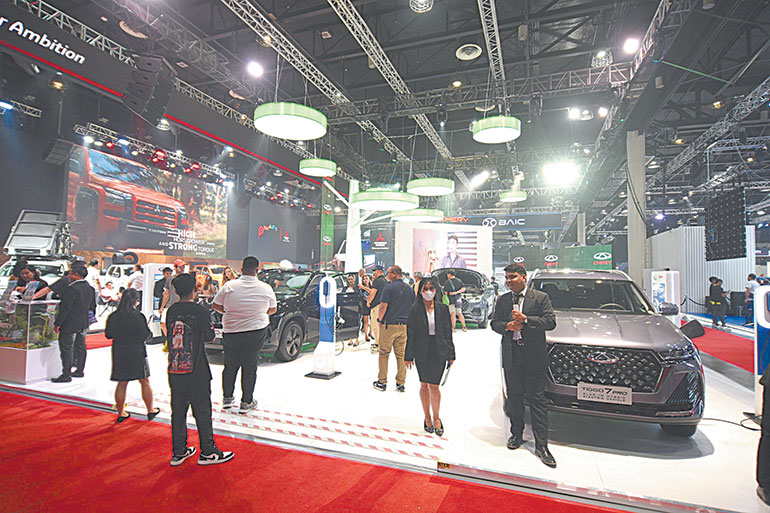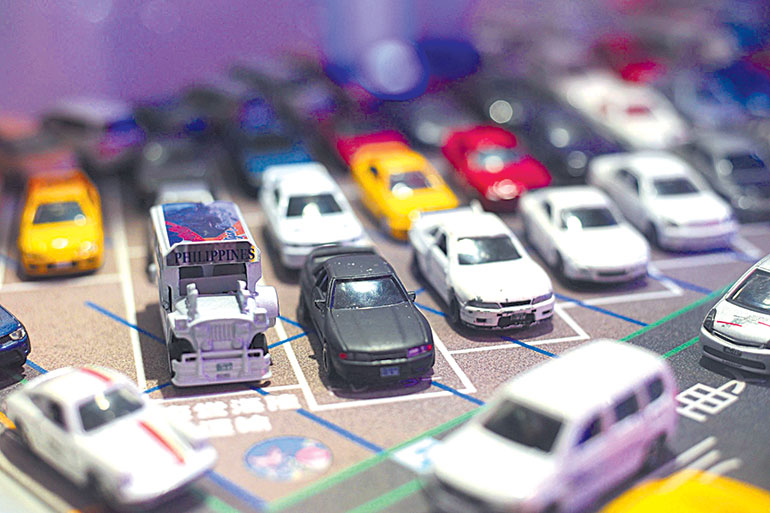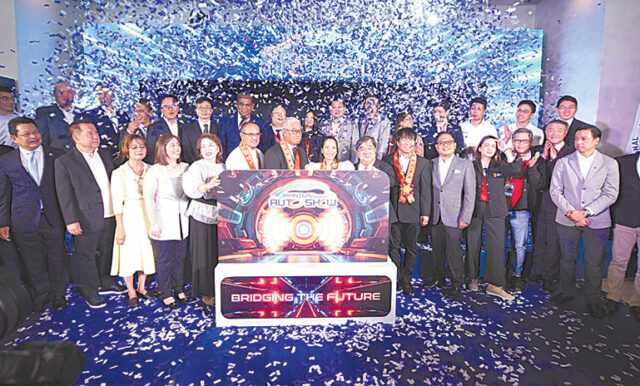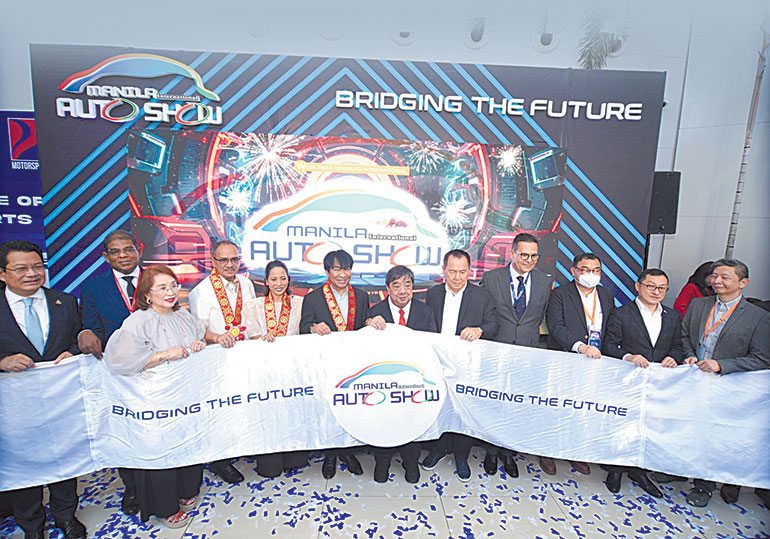MIAS 2025 to showcase expanding automotive lineup
The Manila International Auto Show (MIAS) will celebrate its 20th anniversary with its biggest showcase yet, taking place from April 10-13 at the World Trade Center in Metro Manila.
As the country’s premier auto event, MIAS continues to highlight the latest innovations, cutting-edge designs, and breakthrough technologies in the automotive industry. The show will feature over 90 exhibitors and more than 200 vehicles on display.
With the theme “Driven by Connection,” MIAS 2025 seeks to strengthen the bond between car brands and consumers while bridging the gap between generations of automotive enthusiasts.
The exhibition will showcase a diverse lineup of vehicle brands, offering visitors a firsthand look at the most advanced cars on the market. From fuel-efficient sedans to high-performance sports cars, the floor will cater to various consumer preferences.
A total of 24 passenger car brands will be featured, including well-established names like Hyundai, Isuzu, Kia, Lynk & Co., Nissan, Suzuki, and Tesla. East Asian manufacturers are also gaining ground, with Aion, Aito, BAIC, Bestune, BYD, Changan, Chery, Foton, GAC, GWM, Jaecoo, Jetour, MG, Neta, Omoda, Rox, and Vinfast, all set to introduce their latest models to Filipino buyers.

Chinese auto brands will dominate the exhibition, representing 17 of the 24 passenger vehicle brands on display. Trucks will also play a prominent role, with the latest commercial vehicles from FAW, JAC, and Sinotruk.
Backed by major sponsors, including BPI Auto Loans, Petron, and Shell, MIAS 2025 will introduce vehicle launches, cutting-edge automotive technology, and interactive exhibits designed to benefit consumers.
What to expect in MIAS 2025
MIAS 2025 gives consumers a chance to explore various vehicle options, especially for prospective buyers. The event will feature an outdoor test drive area, allowing visitors to experience the newest models before making a purchase. Many participating brands are also expected to unveil new vehicles.
Since 2025 marks the first full year that the Philippine government will exempt new energy vehicles, including hybrids, plug-in hybrid electric vehicles (PHEVs), and battery electric vehicles (BEVs), manufacturers are expected to showcase a range of new electric and hybrid models, expanding choices in the emerging electric vehicle market.
Tesla will showcase its lineup at MIAS for the first time. The electric vehicle giant, which recently entered the Philippine market, is expected to highlight its approach to sustainable mobility.
Vinfast, an electric vehicle manufacturer from Vietnam, will also make its debut at MIAS 2025 as it expands its presence in the Southeast Asian market.

MIAS 2025 will also welcome Rox with the 01, an outdoor lifestyle-oriented electric vehicle (EV) SUV.
With plans to become a dominant player in the country’s electric vehicle (EV) market, BYD is preparing to roll out several models at MIAS 2025. The Seagull EV, an all-electric compact car, will mark the company’s entry into the affordable EV segment. BYD will also feature the Shark, a plug-in hybrid pickup truck that combines the convenience of traditional combustion engines with the benefits of electric power.
GAC Motor will unveil electrified versions of its popular models. The hybrid variants of the Empow sedan, GS8 SUV, and M8 MPV are already listed on the Department of Energy’s recognized vehicle list.
On the other hand, GWM, while slower in its product rollout, continues to showcase its latest vehicles. The company previously previewed the Wey Gaoshan MPV and the Haval Menglong at last year’s show, but these models have yet to be officially launched for sale.
MG, which had one of the largest booths at last year’s MIAS, will return with more exciting previews. At MIAS 2024, MG showcased the MG 7, the Mifa 9 EV, and the RX9, but those models have yet to be made available in the market.
United Asia Automotive Group, Inc. (UAAGI) will feature a diverse range of vehicles from its renowned brands: BAIC, Lynk & Co, Foton, and Chery. Following the successful relaunch of the BAIC brand and the debut of Lynk & Co at last year’s MIAS, UAAGI promises an even more dynamic presence this year.

After a successful second year in the country, Jetour will unveil its new hybrid and plug-in hybrid models at MIAS 2025, shifting focus from internal combustion engine (ICE) vehicles.
Omoda and Jaecoo aim to build a robust dealer network this year with competitive pricing and a promising initial vehicle lineup. MIAS 2025 will feature the C5 and E5 crossovers, along with the EJ6 SUV.
Kia is expected to showcase a mix of traditional internal combustion engine (ICE) vehicles, turbo hybrids, and full electric vehicles (EVs).
Hyundai will spotlight its high-performance models under the N brand, along with hybrid versions of popular models like the Santa Fe and Tucson. The automaker may also reveal the hybrid Staria Lounge, which has recently been homologated by the Land Transportation Office (LTO).
Japanese auto giant Isuzu is making waves with a possible surprise launch in the passenger vehicle segment. Industry buzz points to the unveiling of the refreshed mu-X, with initial units already seen being transported, raising anticipation for the SUV’s Philippine debut.
Suzuki is also expected to showcase several models that are already gaining traction in Southeast Asia. The Fronx, which is similar in size to the Raize, is expected to be one of the standout models. The brand is also introducing the all-new Dzire, a sedan that has already garnered attention for earning a five-star Global NCAP safety rating.
Subaru, one of the pioneering brands that helped shape the early editions of MIAS, and Ford will not participate in this year’s show. This departure leaves a gap in the lineup of manufacturers who have long been part of MIAS.
Subsequently, automakers are expected to present their latest AI-driven vehicle systems with improved safety, convenience, and performance. AI-powered driver assistance technologies such as adaptive cruise control, automatic emergency braking, and lane-keeping assistance are expected to be among the highlights.
In addition to exclusive previews of models and technology, car enthusiasts can admire well-restored and customized vehicles at the MIAS-Petron Classic Car Competition.

Celebrating two decades of car innovation
Since its inception in 2005, MIAS has become the largest and most anticipated auto show in the Philippines. Founded by motoring journalists Jason Ang, Ulysses Ang, and Alvin Uy, with support from Worldbex Services International founding chairman Joseph Ang, the event was inspired by global auto exhibitions and aimed to provide world-class motoring experiences for Filipino enthusiasts.
The show has since attracted major automotive brands eager to showcase their latest models to Filipino consumers. It has also garnered support from key organizations, including the Automobile Association Philippines (AAP), Tuason Racing School (TRS), and the Car Awards Group Inc. (CAGI).
Tickets are available through the official MIAS website, including a special bundle for groups of five or more. — Mhicole A. Moral




 Similarly, Foton Motor Philippines debuted the country’s first hybrid diesel pickup trucks — the supersized Tunland V7 and V9 — marking a milestone in hybrid technology in the local market while Chery Auto also made waves with its showcase of new energy vehicles (NEVs), featuring the Tiggo 7 and Tiggo 8 Plug-in Hybrid Electric Vehicles (PHEVs), as well as its fully electric eQ7.
Similarly, Foton Motor Philippines debuted the country’s first hybrid diesel pickup trucks — the supersized Tunland V7 and V9 — marking a milestone in hybrid technology in the local market while Chery Auto also made waves with its showcase of new energy vehicles (NEVs), featuring the Tiggo 7 and Tiggo 8 Plug-in Hybrid Electric Vehicles (PHEVs), as well as its fully electric eQ7. Supporting the auto buying journey, BPI Auto Loan co-sponsored the annual motoring showcase as a key partner, offering exclusive promos for prospective buyers. Their Auto Loan Bundle included attractive interest rate discounts, waived fees, and a year of free motor and personal accident insurance. BPI’s booth in MIAS 2024 served as both a consultation hub and a gateway to turn car show dreams into driveway realities.
Supporting the auto buying journey, BPI Auto Loan co-sponsored the annual motoring showcase as a key partner, offering exclusive promos for prospective buyers. Their Auto Loan Bundle included attractive interest rate discounts, waived fees, and a year of free motor and personal accident insurance. BPI’s booth in MIAS 2024 served as both a consultation hub and a gateway to turn car show dreams into driveway realities.












